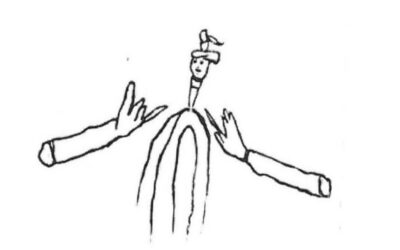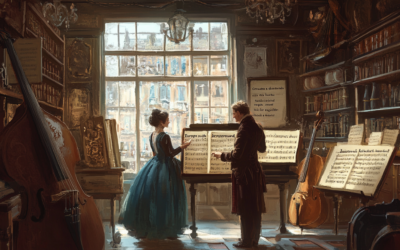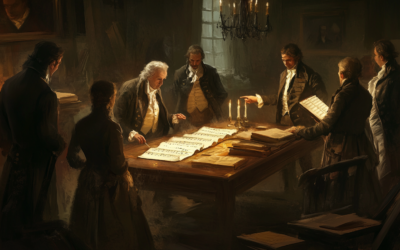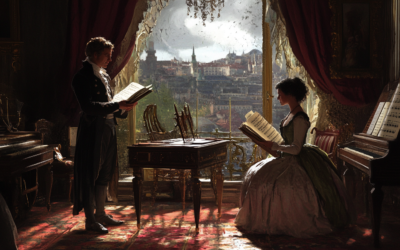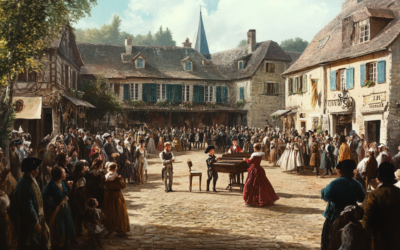Dissecting the Flaws in the Portrait and the Music That Wasn't
The Curious Case of Mozart's Phantom Sonata
In a striking case of artistic misattribution, the Musikwissenschaft has rediscovered Mozart through a portrait, attributing a dubious composition to him based solely on a score’s presence. One has to wonder: is this music really Mozart’s, or just a figment of our collective imagination?
Mozart: The Fall of the Gods
This book offers a fresh and critical look at the life of Wolfgang Amadeus Mozart, challenging the myths that have surrounded him for centuries. We strip away the romanticised image of the “natural genius” and delve into the contradictions within Mozart’s extensive biographies. Backed by nearly 2,000 meticulously sourced citations, this work invites readers to explore a deeper, more complex understanding of Mozart. Perfect for those who wish to question the traditional narrative, this biography is a must-read for serious music lovers and historians.
"In the curious case of Mozart's phantom sonata, standing next to a score doesn’t make you a composer—though it does make for a rather amusing tale!."
Mozart: The Fall of the Gods
In a rather amusing twist, the Musikwissenschaft has unearthed a portrait of the young Mozart from his first trip to Italy, only to attribute a composition to him based on nothing more than the appearance of a score in the painting. As if by mere proximity, the child at the harpsichord was anointed a composer! It begs the question: does standing next to a painting of a lion make one a wildlife expert?
The artist behind this questionable portrayal remains shrouded in mystery. Initially thought to be Saverio Dalla Rosa, some now suspect Giambettino Cignaroli may have been at the easel, perhaps in a fit of familial collaboration. Leopold Mozart’s letters provide tantalising yet scant details, revealing that the portrait was executed in just two sittings. One can’t help but wonder if it was more of a rush job than a masterpiece. Leopold mentions the commission but neglects to comment on the music—surely an oversight for such a “historic” moment.
Constanze Mozart, in a later letter, claims knowledge of two portraits of her husband but dances around the specifics like a skilled diplomat. When the painting reappeared in 1856, it was as if a ghost had emerged from the shadows, yet doubts about its connection to Mozart linger like an unwelcome dinner guest.
Perhaps the most outrageous aspect of this story is the complete absence of the original manuscript, signature, date, and any watermarks. It’s almost as if the piece of music existed solely as a clever ruse! The score displayed on the harpsichord doesn’t fit into any known repertoire of Mozart’s; rather, it seems to be an elaborate game of “Who’s That Composer?” with Mozart holding a losing hand.
The notion that this portrait serves as a “souvenir” is equally entertaining. In the 18th century, it was all the rage to immortalise oneself alongside notable props—like an instrument that screams, “Look at me, I’m a musician!” It seems likely that the choice of a score was more about enhancing the subject’s artistic pedigree than about accurately representing his works. Perhaps a piece by Baldassare Galuppi was standing in for Mozart, reminding us that context is everything—unless, of course, you’re trying to score a few points in the grand game of music history.
In summary, the absence of the original manuscript, signature, date, and watermarks raises serious questions about the authenticity of the music attributed to Mozart in this whimsical portrait. The conflation of a young genius’s image with an unverified composition serves as a stark reminder that, sometimes, our romantic notions of history can lead us down a rabbit hole of misattribution. If only it were as simple as being in the right place at the right time!
You May Also Like
Unveiling the Truth Behind the Drawing
H. S. Brockmeyer’s latest research unravels the mystery behind a July 5, 1791, letter from Mozart to his wife. This remarkable investigation uncovers the original, unembellished drawing Mozart included—vastly different from the altered version widely reproduced in collections today. The discovery raises significant questions about historical accuracy and the intentional shaping of Mozart’s legacy.
The Deceptive Nature of Mozart’s Catalogue
The Thematic Catalogue traditionally credited to Mozart is fraught with inaccuracies, suggesting that many of his famous works might not be his at all. This prompts a necessary reevaluation of Mozart’s legacy and the authenticity of his compositions.
The Mozart Myth Unveiled: A Deeper Look
Mozart’s legacy is far from the untarnished narrative of genius that history would have us believe. The web of deceit woven around his name by those closest to him, including his own widow, reveals a much darker story.
The Other Side of Mozart’s Legacy
Explore the untold story of Mozart, where myth and reality collide. Our critical examination of his life and works reveals a legacy shaped by profit, myth-making, and misattribution. Join us in uncovering the truth behind the man and his music.
The Deception Surrounding Mozart’s Legacy
Anton Eberl’s confrontation with Constanze in 1798 exposed a web of deceit surrounding Mozart’s legacy, revealing that several of his compositions were falsely attributed to the late composer. This chapter uncovers the ethical dilemmas and controversies that have marred the posthumous reputation of one of history’s most celebrated musicians.
Leopold’s Invisible Hand
Behind the glittering performances of young Wolfgang and Nannerl Mozart lay the meticulous guidance of their father, Leopold. Often considered a mere teacher, Leopold’s role in composing and shaping their early musical successes has been largely overlooked. Was the child prodigy truly a genius, or was it Leopold who orchestrated his son’s rise to fame?


